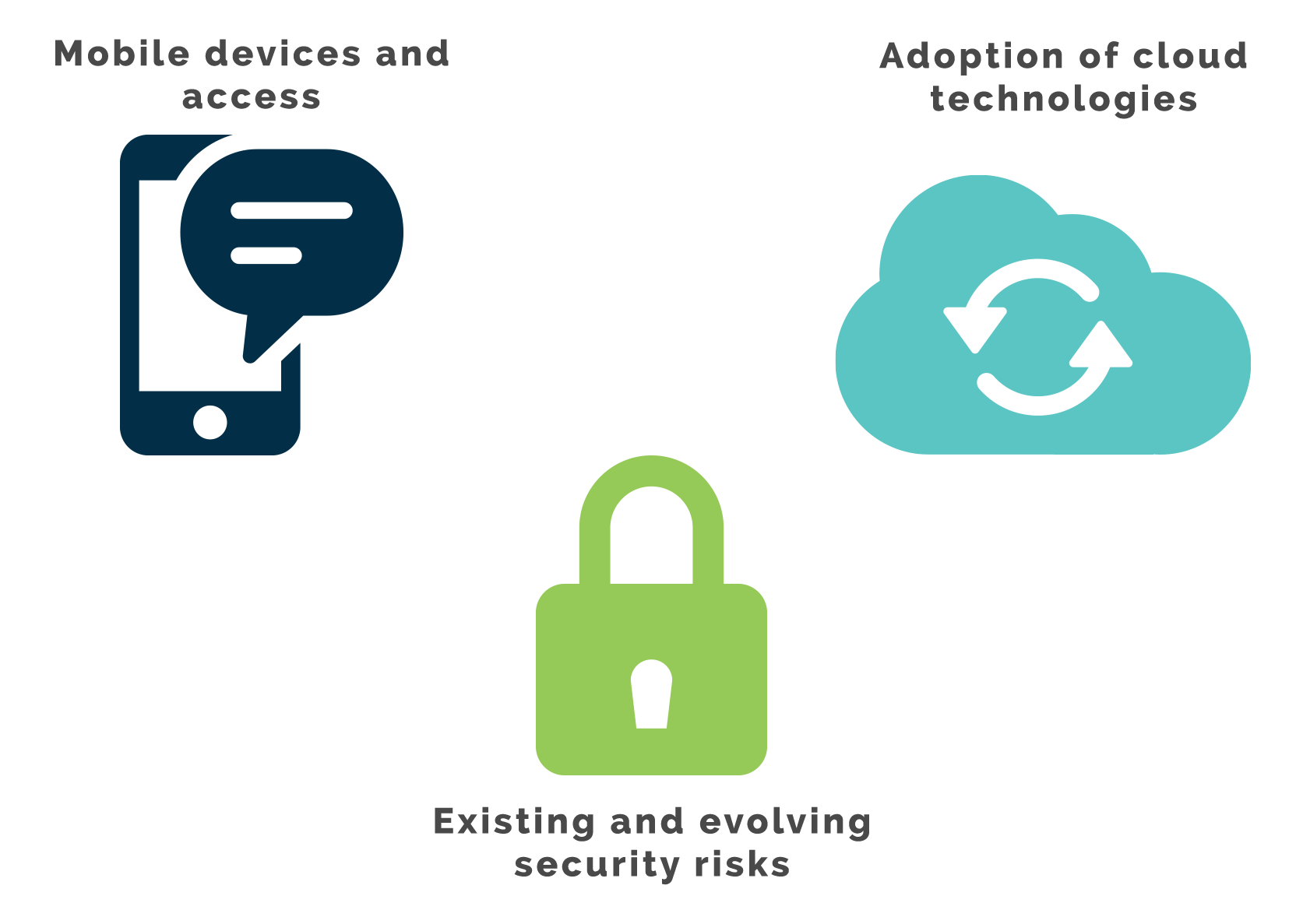Effective May 21, 2023, P&N has joined EisnerAmper. Read the full announcement here.

With the advent of an entirely new standard of users accessing network resources from any location and from any device, zero trust has become a leading cybersecurity initiative. Regardless of size or focus of your organization, it is critical to know what zero trust requires and how it can help protect your organization.
New challenges present new requirements for accessing corporate resources and for securing those resources. Businesses will need an adaptive security model to mitigate emerging risks as remote access and new technology becomes routine. Some of the growing challenges facing your security team include:
 What is Zero Trust?
What is Zero Trust?
Zero trust is built on the principle of “never trust, always verify.” This model was created because many security models default to the same misconception that all users and assets inside an organization’s security perimeter can be trusted. Within the traditional security model, authentication credentials are assumed to be uncompromised and every authenticated user activity is presumed to be valid and trusted.
Many security models default to the misconception that all users and assets inside an organization’s security perimeter can be trusted.
The zero trust model seeks to create a process where trust is considered a vulnerability to network resources. Zero trust does not seek to make a system trusted, but rather eliminates trust altogether. This strategy helps protect your IT infrastructure by utilizing network segmentation, specific role-based access, inhibiting pivoting from devices to device, and providing full-stack activity visibility. Essentially, trust is removed from access. All users, devices, and transactions are assumed to be fraudulent unless they comply with the zero trust policy.
How Does Zero Trust Work?
Rather than assuming everything within the corporate network is trusted, the zero trust model assumes a compromise is occurring and validates each service request as though it occurs from a compromised source. Regardless of where the request originates or what resource it accesses, zero trust methodology requires the mantra of “never trust, always verify.” All transactions are authenticated, authorized, and protected before allowing access. Network micro segmentation and least-privileged access are integrated to hinder and control the ability for threat actors to pivot within the network. Full visibility and data analysis are key functionalities that allow security teams to detect and respond to incidents quickly.
The Three Pillars of Zero Trust
Verify Unequivocally
Always authenticate and authorize based on all available data points, including network service or application, location, machine profile, user identity, data type, and irregularities.
Breach is Assumed
Control damage and hinder pivoting from machine to machine by implementing network segmentation, user isolation, and application control and visibility. Leverage AI and all telemetry sources to gain insight to network activity and augment detection mechanisms.
Configure for Least-Privileged Access
Develop a model for implementing user access roles that only include the minimum access necessary to perform job functions. Data protection, marking, and tagging technologies can assist in enforcing minimum access necessary.
Deploying Zero Trust
It’s a common assumption that zero trust requires revamping of current software, or that implementation requires extensive effort and time. Zero trust can be created on your existing infrastructure and does not necessitate a complete overhaul of your existing technology stack. Zero trust can also be simple to implement and manage, using the five steps below.
- Identify the attack surface.
- Map the interactions.
- Implement zero trust architecture.
- Create and enforce zero trust policy.
- Leverage visibility to modify policy.
Information security is not only a requirement; it has evolved into a basic expectation. With the rapid pace of technology integration and development, maintaining an adequate holistic security approach is becoming untenable. Providing a secure, agile, and adaptable IT infrastructure will require adoption of the tenants of the zero trust model to ensure new technologies, applications, and access methods are able to quickly integrate into a malleable security architecture.
Learn More
Experienced P&N Technology Services professionals work diligently to develop informative articles and webinars on a wide variety of topics, such as:
- How can you stay current in an always-evolving threat environment?
- What steps must be taken to integrate new technology into a secure infrastructure?
- What strategies can help you identify vulnerabilities before attackers can establish a foothold?
- What initial steps should your organization take if current security measures aren't enough to protect against an attack?
- How should your organization respond to a data breach?
Join our cybersecurity contact list to stay updated on all P&N technology insights and webinars.




